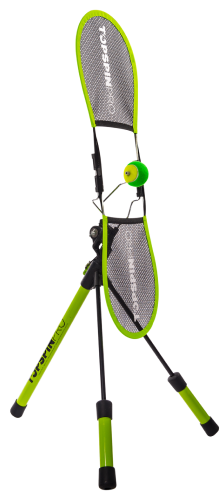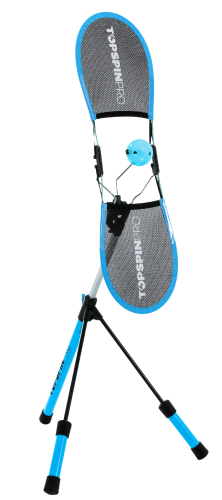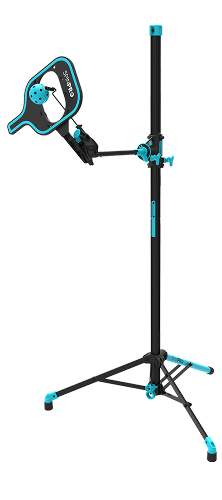
What we'll cover in this article:
Stay in the loop!
Want to be updated when we publish? Be sure to sign up for our newsletter. No spam, we promise!
When it comes to tennis, the quality of your foundational basics can shape your entire playing career. Not only does it influence how quickly you improve, but it also impacts how high you can ultimately climb in skill level. Even experienced players sometimes overlook crucial fundamentals that keep them from reaching their full potential. Before taking your game to the next stage, it’s essential to revisit and truly master the basics. We'll explore these core elements by looking at the most common mistakes like crowding the baseline and see how correcting them leads to a more balanced, controlled, and effective style of play.
5 Common Mistakes Tennis Players Make
Tennis players at every level slip into basic mistakes that limit long-term growth. These foundational errors often go unnoticed, but if you don’t fix them early, your progress will plateau. Below are some of the most common issues. Addressing them now is key to improving faster and reaching your full potential! Let's master the basics:
1. Standing Too Close to the Baseline
The Issue:
Many players plant themselves right on top of the baseline, often for a few key reasons: they may not understand the court’s geometry or the ball’s flight path, they assume the baseline is the “correct” standing point, or they believe that moving closer will let them take the ball earlier and apply more pressure to their opponent. However, if you’re not fully confident in your timing, footwork, or overall experience, this aggressive positioning usually backfires. It can force you into rushed, high-contact shots (often above the head), and off-balance stances, meaning an increased risk of errors.
The Fix:
Give yourself a bit more breathing room. Starting at least a step or two behind the baseline (I like to suggest 3 feet minimum) provides extra time to prepare for incoming shots, particularly if your opponent hits with heavy topspin or deep balls. This doesn’t mean you should hang out behind the baseline permanently. Learn to move forward when you recognize a shorter ball. The key is flexibility and adjusting your positioning accordingly. Stand slightly further back to gain reaction time, and once you start to read the shots and feel comfortable, move in to attack a shorter ball.
The image below gives a visual explanation of what position you will generally be in when striking a ball in those zones:
2. Neglecting Footwork
The Issue:
Footwork is one of the most overlooked fundamentals, especially in adult players. Standing still and stretching for shots instead of moving your feet can result in mis-hits and off-balance strokes. Without proper footwork, even the best technique in your upper body is wasted.
The Fix:
Keep your feet moving between shots. Small, adjusting steps will help you get into the optimal hitting position more frequently. Aim to be out of breath. If your game of tennis isn't physically hard then you are not moving those feet enough! Work on footwork drills (like side shuffles, quick steps around cones, or ladder exercises) off the court to build agility and help you glide around the baseline. On the court, focus on getting behind the ball and setting your feet before swinging. Good footwork ultimately leads to better timing, balance, and improved shot selection.
3. Inconsistent Follow-Through On Groundstrokes
The Issue:
Shortening your swing and failing to finish the stroke can lead to shots sailing long, netting too soon, or going wide. It also usually means reduced topspin on groundstrokes. Inconsistent follow-through often happens when players try to “steer” the ball rather than trust their technique. It also happens when players are too tight or trying to muscle the ball.
The Fix:
Make a point of completing your swing. Finish with your racket high (over your shoulder for forehand and two-hander and up high for the one-hander) A complete follow-through ensures consistent spin, control, and power. Practice focusing on the end position of your swing, not just the moment of contact.
The TopspinPro can help you become more consistent with your follow-through. Check out the video below for some step-by-step tips for the forehand:
4. Swinging Too Big Too Soon
The Issue:
The allure of hitting a huge winner can tempt players to take massive swings on every ball. Over-swinging leads to lost control, mistimed hits, and excessive unforced errors. Often, players try to generate power from their arms alone, resulting in erratic placements and wasted energy.
The Fix:
Master smaller, more controlled swings first, focusing on clean contact first and proper technique. Once you’re consistently making solid contact and placing the ball where you want, you can lengthen the swing a little and learn to engage the body more.
If you need help with your swing shape look no further. We have in-depth beginner guides to groundstrokes below:
TOPSPINPRO BEGINNER COURSES
We use the latest neuroscience in our TopspinPro Online Courses. Check them out for some in-depth help with developing your shots:
5. Not Having a Plan
The Issue:
Even beginners can benefit from playing with intention rather than simply hitting the ball back and hoping for the best. Without a basic strategy, such as aiming deep, directing shots at your opponent’s weaker side, or consistently going cross-court you’ll struggle to control the rally. Your plan doesn’t have to be complex; it can be as straightforward as knowing exactly where you want the ball to land. Once you have a target in mind, you can adjust your technique and footwork accordingly.
The Fix:
Start small: pick one strategy to work on for a while. I recommend starting with the most basic, which is knowing where you are aiming every shot. By having a clear, simple plan, you build confidence, structure, and purpose into your game. Over time, you can layer more complex tactics onto these fundamental strategies.
Bonus Basic: Neglecting a Proper Ready Position
The Issue:
It’s easy to get caught standing flat-footed, racket down at your side, waiting passively for the ball. This static posture slows your reaction time and makes it harder to move into position for the next shot.
The Fix:
Adopt an athletic stance: knees slightly bent, weight on the balls of your feet, and racket held out in front of you with a relaxed grip. Perform a split step (a small hop just before your opponent strikes the ball) to activate your muscles and prepare for quick movement in any direction. This proactive position ensures you’re ready to chase down tough shots, improving your consistency and timing.
Conclusion
Mastering the basics might not feel glamorous, but it’s these foundational skills that set the stage for long-term improvement. Giving yourself more space behind the baseline, maintaining a solid ready position, controlling your swings, improving footwork, following through consistently, and employing a simple plan all work together to create a more stable, confident, and effective player.
Remember, tennis is a sport of progression, but also mistakes. These adjustments might feel uncomfortable at first, and you may even make more mistakes, to begin with, but with patience and consistent practice, you’ll see tangible results. By prioritizing these core fundamentals, you’ll develop a solid base that can support more advanced techniques, strategies, and styles of play ultimately making you a more well-rounded and formidable opponent on the court.
FAQs
-
Why is mastering the basics important in tennis?
Mastering the basics in tennis is crucial because it sets the foundation for your entire playing career. It influences how quickly you improve and how high you can climb in skill level. Even experienced players sometimes overlook these fundamentals, which can prevent them from reaching their full potential.
-
What is a common mistake players make regarding the baseline, and how can it be corrected?
A common mistake is standing too close to the baseline, which can lead to rushed and off-balance shots. To correct this, players should start a step or two behind the baseline to give themselves more time to prepare for incoming shots. This flexibility in positioning allows for better reaction time and control.
-
How does neglecting footwork affect a player's performance, and what is the solution?
Neglecting footwork can result in mis-hits and off-balance strokes, wasting even the best upper body technique. The solution is to keep feet moving with small, adjusting steps to get into optimal hitting positions. Practicing footwork drills off the court and focusing on setting feet before swinging can greatly improve timing, balance, and shot selection.
-
Why is follow-through important in groundstrokes, and how can it be improved?
Follow-through is important because it ensures consistent spin, control, and power. Inconsistent follow-through often leads to shots going long, wide, or into the net. Players can improve by finishing their swing with the racket high, focusing on the end position rather than just the moment of contact.
-
What role does having a plan play in a tennis match, and how can players develop one?
Having a plan gives structure and purpose to a player’s game, allowing them to control the rally instead of just reacting. Players can start by choosing a simple strategy, such as aiming for specific targets, and gradually layer more complex tactics over time. A clear plan builds confidence and enhances overall performance.
Enjoyed this article?
Be sure to sign up for our newsletter and we'll keep you up to date about new posts





2 comments
Excellent advice on the basics.
Thanks so much for the feedback Robert!